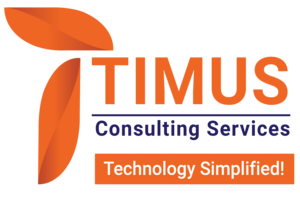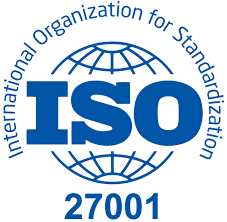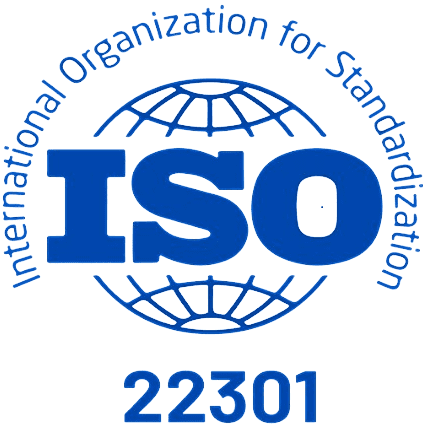In our increasingly digital world, the security of information technology (IT) systems and data has become a critical concern for organizations of all sizes and across all industries. The rise in cyber threats and the growing complexity of IT environments have underscored the need for robust IT risk management and cybersecurity strategies. This blog will explore the importance of IT risk and cybersecurity, the challenges organizations face, and best practices for safeguarding their digital assets.
Understanding IT Risk and Cybersecurity
IT Risk refers to the potential for losses or damages related to the use of information technology. This can include data breaches, system failures, cyber-attacks, and other events that could negatively impact an organization’s operations, reputation, or bottom line.
Cybersecurity is the practice of protecting systems, networks, and data from digital attacks. It involves implementing measures to prevent unauthorized access, data breaches, and other cyber threats. Cybersecurity is a critical component of IT risk management, as it addresses specific threats that can exploit vulnerabilities in IT systems.
The Importance of IT Risk and Cybersecurity
Protecting Sensitive Data:
Organizations collect and store vast amounts of sensitive data, including personal information, financial records, and intellectual property. Effective cybersecurity measures are essential to protect this data from unauthorized access and breaches.
Maintaining Business Continuity:
Cyber-attacks can disrupt business operations, leading to significant downtime and financial losses. A strong cybersecurity strategy helps ensure that critical systems and data remain available and functional, even in the face of cyber threats.
Regulatory Compliance:
Many industries are subject to stringent data protection regulations, such as GDPR, HIPAA, and PCI-DSS. Compliance with these regulations requires robust IT risk management and cybersecurity practices.
Building Customer Trust:
Customers expect organizations to protect their personal information. Demonstrating a commitment to cybersecurity can enhance customer trust and loyalty.
Preventing Financial Losses:
Cyber incidents can result in significant financial losses due to theft, fraud, ransom payments, and the costs of responding to and recovering from attacks. Investing in cybersecurity helps mitigate these risks.
Challenges in IT Risk and Cybersecurity
Evolving Threat Landscape:
Cyber threats are constantly evolving, with new and more sophisticated attacks emerging regularly. Staying ahead of these threats requires continuous monitoring, updates, and adaptation.
Complex IT Environments:
Modern IT environments are complex and often include a mix of on-premises systems, cloud services, and mobile devices. Securing these diverse environments can be challenging.
Resource Constraints:
Many organizations, especially small and medium-sized enterprises (SMEs), may lack the resources or expertise to implement comprehensive cybersecurity measures.
Human Error:
Employees can inadvertently create security vulnerabilities through actions such as falling for phishing scams, using weak passwords, or misconfiguring systems.
Third-Party Risks:
Organizations often rely on third-party vendors and service providers, which can introduce additional cybersecurity risks if their security practices are not robust.
Best Practices for IT Risk and Cybersecurity
Conduct Regular Risk Assessments:
Regularly assess IT risks to identify vulnerabilities and prioritize mitigation efforts. This includes evaluating the potential impact of different threats and the likelihood of their occurrence.
Implement Multi-Layered Security:
Use a multi-layered approach to security, incorporating firewalls, antivirus software, intrusion detection systems, and encryption to protect against a variety of threats.
Develop a Cybersecurity Policy:
Establish a comprehensive cybersecurity policy that outlines roles, responsibilities, and procedures for protecting IT systems and data. Ensure that all employees are aware of and adhere to this policy.
Train Employees:
Provide regular cybersecurity training to employees to raise awareness of common threats and best practices for preventing them. This includes training on recognizing phishing attempts, using strong passwords, and following data protection protocols.
Use Strong Access Controls:
Implement strong access controls to ensure that only authorized individuals can access sensitive systems and data. This includes using multi-factor authentication (MFA) and regularly reviewing access permissions.
Monitor and Respond to Threats:
Continuously monitor IT systems for signs of suspicious activity and have an incident response plan in place to quickly address and mitigate any security breaches.
Stay Updated:
Keep all software, systems, and security tools up to date with the latest patches and updates to protect against known vulnerabilities.
Engage with Third-Party Vendors:
Ensure that third-party vendors and service providers adhere to robust cybersecurity practices and regularly assess their security measures.
Conclusion
In today’s digital age, IT risk and cybersecurity are critical components of an organization’s overall risk management strategy. By understanding the importance of protecting sensitive data, maintaining business continuity, and complying with regulations, organizations can build a strong cybersecurity foundation. While the challenges are significant, implementing best practices such as regular risk assessments, multi-layered security, employee training, and robust access controls can help mitigate risks and safeguard digital assets.
As cyber threats continue to evolve, staying vigilant and proactive in cybersecurity efforts is essential. By prioritizing IT risk and cybersecurity, organizations can protect their valuable information, maintain customer trust, and ensure long-term success in the digital landscape.
About us
We are Timus Consulting Services, a fast-growing, premium Governance, Risk, and compliance (GRC) consulting firm, with a specialization in the GRC implementation, customization, and support.
Our team has consolidated experience of more than 15 years working with financial majors across the globe. Our team is comprised of experienced GRC and technology professionals that have an average of 10 years of experience. Our services include:
- GRC implementation, enhancement, customization, Development / Delivery
- GRC Training
- GRC maintenance, and Support
- GRC staff augmentation
Our team
Our team (consultants in their previous roles) have worked on some of the major OpenPages projects for fortune 500 clients across the globe. Over the past year, we have experienced rapid growth and as of now we have a team of 15+ experienced and fully certified OpenPages consultants, OpenPages QA and OpenPages lead/architects at all experience levels.
Our key strengths:
Our expertise lies in covering the length and breadth of the IBM OpenPages GRC platform. We specialize in:
- Expert business consulting in GRC domain including use cases like Operational Risk Management, Internal Audit Management, Third party risk management, IT Governance amongst others
- OpenPages GRC platform customization and third-party integration
- Building custom business solutions on OpenPages GRC platform
Connect with us:
Feel free to reach out to us for any of your GRC requirements.
Email: [email protected]
Phone: +91 9665833224
WhatsApp: +44 7424222412
Website: www.Timusconsulting.com





